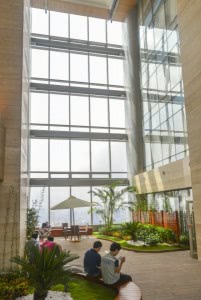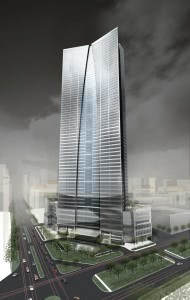
What is Good Design?
Many of us have asked the question: “What is good design?” But more importantly, what is good design and why does it matter? In the context of today’s ever evolving cultural matrix and impending climate change, good design is not only an important way to improve how we function and perceive our world but is an undeniable imperative for the good stewardship of our dwindling resources as a way to slow the rate of our quickly degrading ecosystem.
Finding that sweet spot that results in a successfully designed project is often a complex and circuitous process. It is difficult to describe, and when created, it may be elusive to replicate. Good design is appreciated but often misunderstood. It is sometimes held in great reverence and takes on an almost mystical aura, but is actually identifiable and quantifiable.
What makes a building architecturally successful programmatically, sustainably, contextually, financially and aesthetically? How can one design a dress that is durable and well=made of renewable resources yet is stylistically relevant and undeniably elegant? How can an interior have clear circulation, excellent daylight, use green materials and yet still feel comforting and rejuvenating? What is the process that results in an automobile that is not only physically beautiful, but is also mechanically reliable, energy efficient and all the while exhilarating and fun to drive?
Through a balanced approach, a designer can achieve successful design reliably and consistently. This balance is found in the zone between the pragmatic and the intuitive, the right and left area of the brain. This design is manifested in the physical world but is a result of a process that is starts with an intangible idea.
The philosophical conversation regarding the “reality” of the human experience precedes the ancient Greeks but is at the crux of today’s successful design process. It is said that the stances of Plato and Aristotle can be simply summarized as follows: Plato’s philosophy describes how we think about the world. Aristotle’s philosophy is how we experience the world. So, what do these rather abstract words mean in the realm of design?
Louis Kahn, the celebrated modernist architect, had what he called architectural “forms”. Not dissimilar to Platonic forms: the perfect circle, the straight line, the exact point, Kahn’s forms were the door, the roof, the wall, etc. These forms represent pure ideals. We can never realize them in their perfect iteration in the physical world. We don’t create forms—we only seek to understand them. Kahn calls design an “offering” to the form.
The form’s exclusion in the physical world is an important counterbalance to the physical manifestation that we can create, see and touch: the idea of a perfect circle that is physically drawn with a compass or a computer, the form of a door as a malleable portal whose built form is a recycled steel door with ball bearing hinges. The forms remain unadulterated as ideals in our cultural syntax while their offerings in the physical world can be relevant, concise, adaptive, reassuring resourceful and interactive in how they respond to our built and natural environment.
Successful design is not only a function of the specific details of materiality and execution, it is also found in the world of forms, imagination and whimsy. I am speaking of design—a conversation and a process—that is based in both worlds. Every decision should refer back to the idea.
Every idea should refer to the specifics of execution and the reality of the physical world as we see it. One reality of the physical world is that we are upsetting the natural carbon cycle by releasing vast amounts of carbon dioxide at accelerated and disturbing rates. In the reality as observed by scientists, we are in the middle of a process of severe climate change and the products we design are large contributors to this change. Buildings account for 39% of carbon dioxide emissions in the United States. Steady increases in the global population require higher urban densities and design solutions that dial back carbon dioxide releases to pre-industrial levels.
So, how can a new vision, in the spirit of Plato’s Republic and yin and yang of Eastern philosophy, trigger ideas and design innovation that reverses climate change responsibly and with lasting impact?
As humans and specifically as designers, we are uniquely positioned to synthesize the abstract and tangible into a result that can be richly experienced both emotionally and physically.
To achieve success in design, to achieve responsible and succinct design with lasting impact, I am proposing a balanced approach: between complementing the worlds of Plato, whose right finger is pointed to the cosmos and the world of forms, and Aristotle, whose palm is pointed down towards the earth in realities of budgets, program and science. Let’s create beauty that is kind to our ecosystems and moves us spiritually. Let’s design in that middle zone that is informed by both the white and black, and create work in the beautifully multi-faceted world of design that looks both up and down yet moves forward, pointing straight ahead towards elegant, enlivened, marketable and environmentally responsible outcomes.
Lotte Center Hanoi is a new, 272m tall mixed-use tower in Vietnam’s capital. It has a basis in sound constructability and sustainability, but its shape also reflects the culture of Vietnam. The subtle shape of the structure takes cues from a traditional garment. The twin tower design, a result of civic planning restrictions, capitalizes on the close proximity of both tower components by virtue of providing an expansive central atrium that connects both components, top to bottom. This atrium system is repeated every several floors and allows inhabitants to loose themselves in the serenity of landscaped indoor gardens and, at the same time, enjoy breathtaking city views via expansive, multistory glass curtains. The tower’s succinct atrium design contributes to a 70 percent reduction of electrical lighting loads, as compared to a tower without atria.


